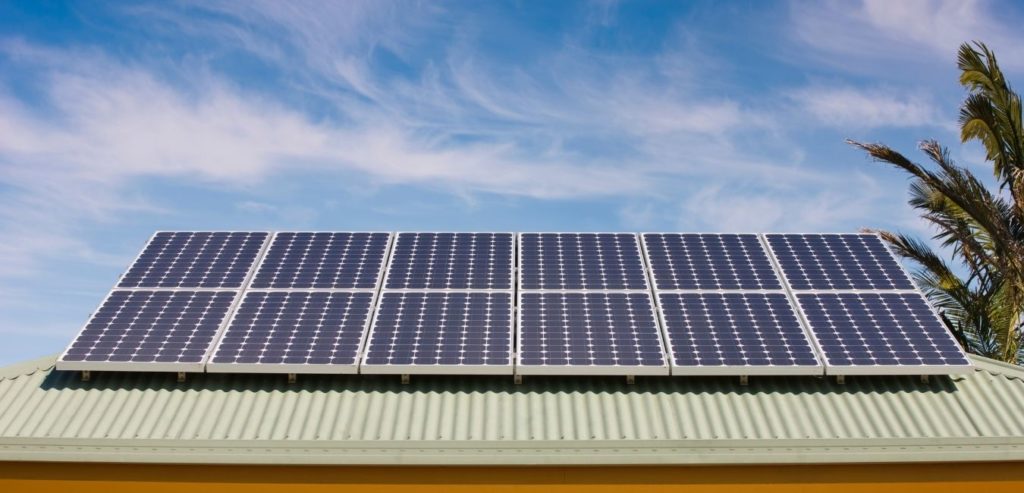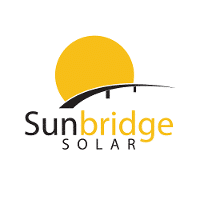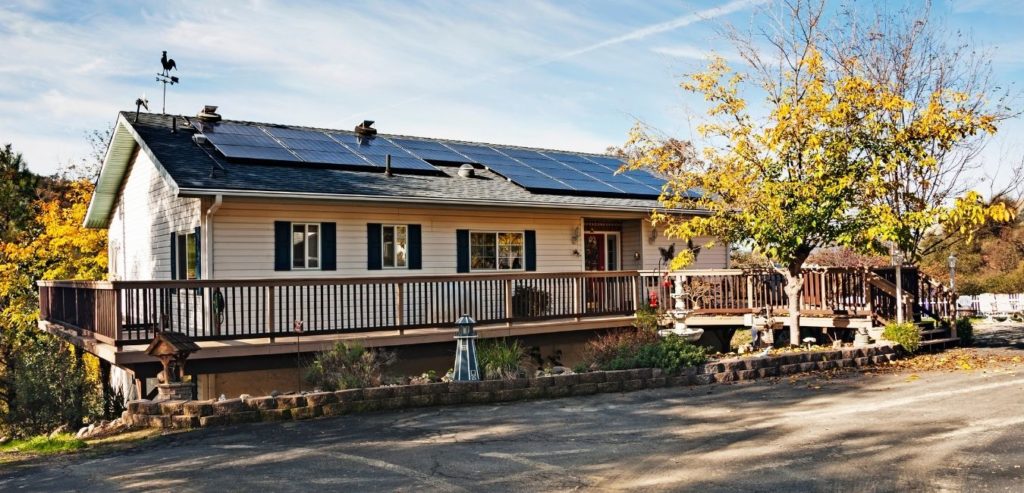Home Solar Panel Guide for the PNW
Home solar energy systems can provide a whole host of benefits, even in the sometimes gloomy Pacific Northwest climate! At Sunbridge Solar, we strive to provide the best possible information about residential solar energy systems so you can make an informed decision about whether solar is right for you.
What Is Residential Solar Power?
Residential solar power refers to photovoltaic arrays (groups of solar panels) that are installed on your home’s roof to generate electricity for the household. The solar energy system is generally grid-tied, which means you don’t have to rely 100% on the solar energy system to provide all of your power, and you can pull electricity from the local utility grid if you need to or sell excess solar energy to the grid in most cases. Residential solar power provides quite a few benefits, as we will outline later in this article.
How Does It Work?
Basically, once the solar panels are installed on your home, they will generate power whenever the sun’s rays hit the surface of the panels. This means, of course, that your panels will generate the most power during the middle of the day and none at night. To make solar energy feasible for your home, you’ll ideally need a pitched, south-facing roof space that isn’t shaded by many trees, buildings, or other obstacles. The solar potential for your home will be evaluated based on its location, orientation, shade level, the average number of sunny hours per day, and several other factors in order to determine if solar energy will be financially advantageous for you.
When the sun hits the solar panels on your roof, electrons within are knocked loose, creating a positive charge. This electrical charge then runs through wires to your inverter, which changes the current from DC to AC, which is what most household appliances and devices use. Then the AC electricity flows into your house to be used or into a battery backup system if you have one. If you don’t need all the solar electricity at the time it’s produced, you can generally ‘sell’ this excess to your utility company through a solar incentive program called net metering. That way, you can essentially bank your solar energy with your utility company so it doesn’t go to waste.
Read More:

Cost of Residential Solar Panels
The initial cost of installing a residential solar energy system average cost has dropped by around 70% over the last decade alone, making it more affordable than ever for homeowners. In 2008, the average U.S. price for home solar was over $8 per watt, whereas the 2021 average cost is $2.81 per watt. A typical home solar energy system is around 6 kilowatts (6,000 watts), which means that the current average cost to install a solar energy system will be around $16,860.
But, keep in mind that there are many different solar incentives that can reduce your upfront cost of solar, including a 30% federal investment tax credit. Depending on your exact location, you may also be able to take advantage of the state, local, and utility company incentives that can include cash rebates, tax breaks, net metering programs, SRECs, and more.
When the sun hits the solar panels on your roof, electrons within are knocked loose, creating a positive charge. This electrical charge then runs through wires to your inverter, which changes the current from DC to AC, which is what most household appliances and devices use. Then the AC electricity flows into your house to be used or into a battery backup system if you have one. If you don’t need all the solar electricity at the time it’s produced, you can generally ‘sell’ this excess to your utility company through a solar incentive program called net metering. That way, you can essentially bank your solar energy with your utility company so it doesn’t go to waste.
Benefits of Home Solar Energy Systems
There are a few major benefits of home solar energy systems, with the biggest one being that you will save money on your electricity bill. Once you have installed the solar energy system, it immediately begins paying for itself by producing clean, free electricity right there at your home. You can use this free energy during the daytime and pay for grid electricity only when your solar panels aren’t producing or can’t keep up with your energy demands. And, since you can often sell excess solar energy to your utility company through net metering, you can build up credit on your utility account during the highly productive sunny summer months and apply for that credit against your utility bill during the winter to help keep your energy costs down year-round.
A home solar energy system can also increase the value of your home – by an average of around $14,000! Many homebuyers are willing to pay much more for a home with solar energy already installed than they would for a comparable home without solar since they don’t have to do any of the work, the value is already added through the hardware installation, and they will still benefit from lower monthly energy bills. Solar-equipped homes also often sell faster than equivalent homes without solar.
Finally, adding solar power to your home reduces your carbon footprint dramatically, since you are generating your own clean energy right at home and don’t need to depend as much on-grid energy which may be generated using fossil fuel or other non-sustainable methods.
When the sun hits the solar panels on your roof, electrons within are knocked loose, creating a positive charge. This electrical charge then runs through wires to your inverter, which changes the current from DC to AC, which is what most household appliances and devices use. Then the AC electricity flows into your house to be used or into a battery backup system if you have one. If you don’t need all the solar electricity at the time it’s produced, you can generally ‘sell’ this excess to your utility company through a solar incentive program called net metering. That way, you can essentially bank your solar energy with your utility company so it doesn’t go to waste.
Drawbacks of Home Solar Energy Systems
There are also a few drawbacks to be aware of before you decide to install solar at your home. As we mentioned, installing a new solar energy system can be costly, even with solar incentives applied. But, financing options are increasingly available, making it more financially feasible than having to pay cash upfront. And, the average payback period for residential solar in the U.S. is just 8 years – that’s the amount of time it will take for your electricity bill savings to outstrip the cost of installing your solar energy system. Since the system will likely function for 25-30 years, you will then benefit from around two decades of free energy after the system has paid itself off.
Another drawback is that solar systems only generate energy when the sun is out. So, during nighttime hours and when the weather is poor, you will still have to purchase energy from the grid. But, if you’ve banked credit with the utility company through net metering, your costs will still be lower than without a solar system. Solar technology has also improved in recent years so that even scattered sunlight, such as that which is produced on overcast days, can be used to generate electricity effectively.
Finally, your solar energy system will need occasional maintenance and possibly repair. While solar panels themselves can last up to 30 years, other components of the system like inverters may need to be replaced more frequently.
Understanding 10 Key Solar Panel Specs
Let’s take a look at some key specifications for solar panels:
1. Watts
Watts are the unit of measure for electrical output that are used to describe different sizes of solar panels. Most residential solar panels are between 200 and 400 watts. The higher the wattage, the larger the physical dimensions of the panel.
2. Dimensions
The dimensions of the solar panels are important to note because you will need to determine if your roof space is adequate to mount enough solar panels to generate the amount of power your household requires. You’ll need to factor in mounting racks and code-mandated space between and around the panels.
3. Warranty
When choosing solar panels, it’s important to select products that are backed by a performance warranty and a manufacturing warranty. 25-year warranties are considered the gold standard currently.
4. Weight
When you are working with your solar contractor to design your solar array, the weight of the panels and the weight-bearing capacity of your roof will need to be analyzed. This will prevent damage to your roof and ensure that your panels are mounted securely.
5. Backsheet
The backsheet is the plastic or aluminum backing on a solar panel that waterproofs it. Some homeowner’s associations require that you use solar panels that have a black frame and a black backsheet, which makes them blend in better with your roof’s surface.
6. Tolerance Rating
The nameplate wattage rating of a solar panel may not be 100% accurate because of differences between testing conditions and real-world conditions. Manufacturers address this by providing a tolerance rating that indicates how much more or less wattage may be generated.
7. Temperature Coefficient
Solar panels actually produce less power when the ambient temperature is very high, so the temperature coefficient indicates how much power loss to expect in a percentage-per-degree format.
8. Conversion Efficiency
The conversion efficiency rating of a solar panel indicates in a percentage format how much of the sunlight that hits the surface of the panel will be converted into electricity. Higher efficiency panels are obviously more desirable, but they are also more expensive.
9. Glazing
Most solar panels are encased in tempered glass or plastic glazing that protects the top surface from the elements. Glazing should be high-clarity, high transparency, and finished with an anti-reflection treatment. Tempered glass is often used because when broken, it will shatter into small harmless pieces rather than larger more dangerous shards.
What To Look For in Solar Warranties?
Solar panels are a big investment, so it’s important to select models that come protected with a solid warranty. Look for panels that are protected by both a performance warranty as well as a manufacturing or workmanship warranty.
A performance warranty guarantees that at the end of the warranty term, the panel will still produce a certain minimum percentage of the original production capacity. So for example, the warranty may guarantee that after 20 years, the solar panels will still produce at least 80% of the power that they did on day one. This warranty should be at least 25 years – ideally as high as 35 years.
A workmanship warranty will cover problems with the construction of the panel, such as if the frame comes loose or the panel arrives cracked. These warranties are generally shorter – often 10-12 years.
Read the fine print on the solar panel warranty before you make a purchase. Some manufacturers do not cover shipment or installation, so if a panel breaks before it’s actually installed on your roof, you may be on the hook to pay for a replacement.
Also, be aware of any warranty-related maintenance contracts. For instance, attempting to do the maintenance yourself may void a warranty, and not performing any maintenance at all can also void it. It’s always best to have a professional perform regular maintenance on your solar system.
Solar manufacturers’ warranties are often a good indication of the quality of their products.
Residential Solar FAQs
Here are a few questions we get asked most often about residential solar. Don’t see yours?
Solar can definitely save you money since you will be paying much less for your monthly energy bill. Although it’s a big expense upfront, residential solar systems pay themselves off in an average of about 8 years, which means that for the remainder of the solar panels’ lifespan (often 25-35 years total) you can enjoy free energy after already recouping your initial investment.
Although the goal is to offset 100% of your energy consumption with solar panels, it’s often not possible. That’s because the solar system only generates power when the sun is shining while electricity is often consumed around the clock. Additionally, roof space and budget may limit the size of the solar system. But, with a battery backup system or a solid net metering policy, you can often come very close to zeroing out your energy bill.


